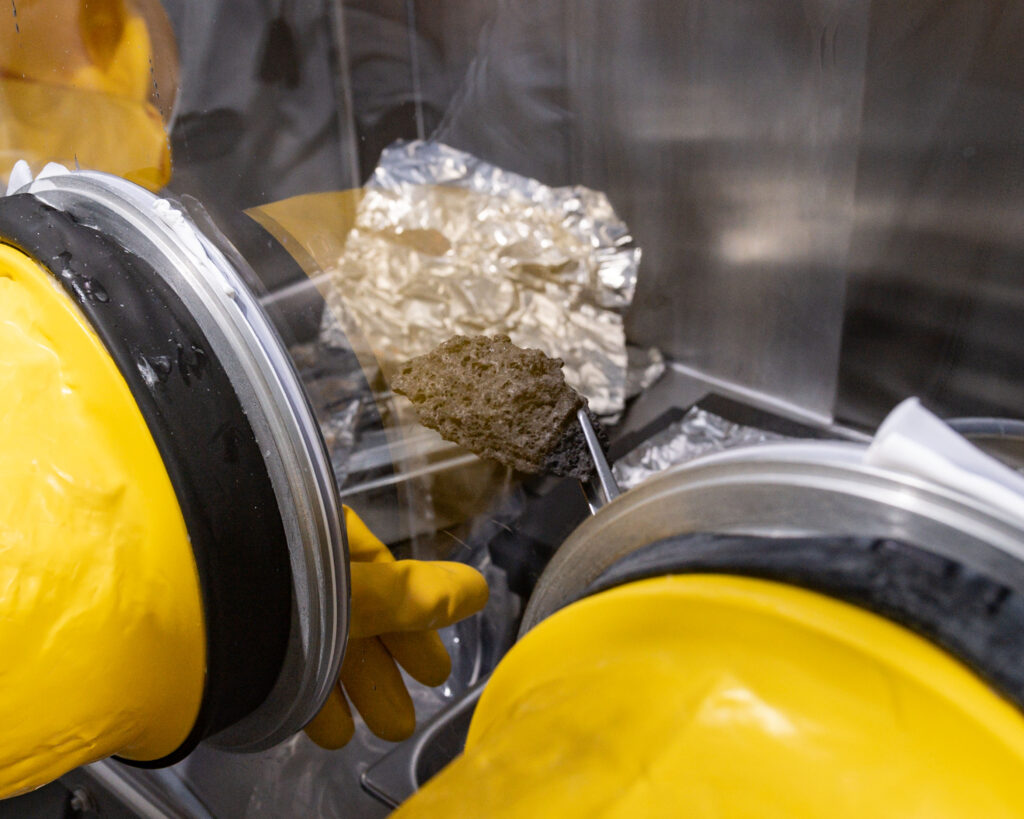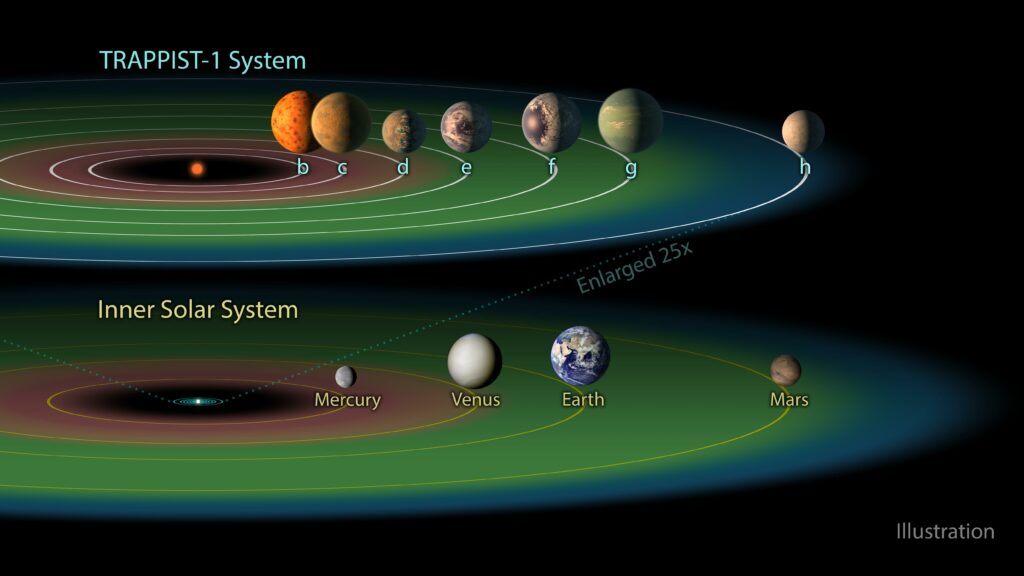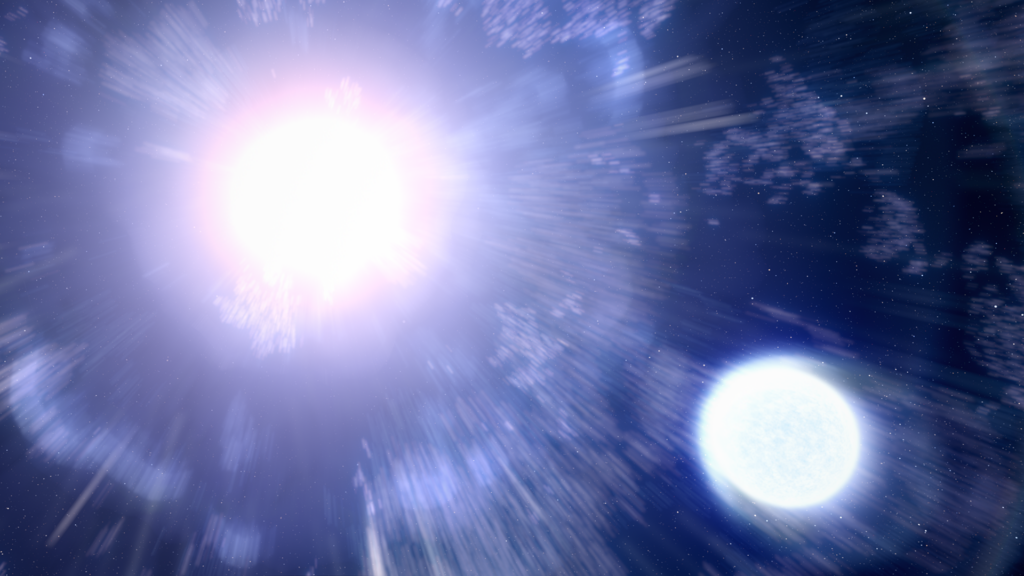Data from the Hubble Space Telescope has determined that the newly discovered companion of a star that went supernova had its outer hydrogen layer siphoned off before the explosion. The results support the theory that massive stars generally form and evolve as binary systems. Plus, rocks from space, Crew-4 comes home, searching for life beyond Earth, and another Canon lens review.
Podcast
Show Notes
Fireball leads to meteorite find in Mississippi
- AMS press release
Pristine Apollo-era Moon rocks being analyzed
- NASA Goddard press release
Crew Dragon Endurance returns 4 to Earth
Earth 2.0 could be young, rocky exoplanet
- SwRI press release
- “Mantle Degassing Lifetimes through Galactic Time and the Maximum Age Stagnant-lid Rocky Exoplanets Can Support Temperate Climates,” Cayman T. Unterborn et al., 2022 May 3, The Astrophysical Journal Letters
Finding the limits of ocean worlds
- UC Berkeley press release
- University of Washington press release
- “On the pressure dependence of salty aqueous eutectics,” Brooke Change et al., 2022 April 12, Cell Reports Physical Science
Star blasts star away
- Hubblesite press release
- “The Candidate Progenitor Companion Star of the Type Ib/c SN 2013ge,” Ori D. Fox et al., 2022 April 13, The Astrophysical Journal Letters
Transcript
It was a late night for some of us, as Crew-4 returned to Earth from the International Space Station. More on that in a few.
But first, we’re going to start out the show with rooooocks from spaaaaace.
And we’ll take a look at some ways researchers are trying to narrow down places to look for life beyond Earth.
Then there’s this really shy star that was hiding in the bright flash of its companion’s supernova.
Last but not least, I’ve got another lens review for you this week.
All of this and more is coming at you, right here on the Daily Space.
I am your host Dr. Pamela Gay.
And I am your host Erik Madaus.
And we’re here to put science in your brain.
Let’s kick this news off with a bang… literally.

Last week on April 27, posts about a fireball seen over parts of the southern U.S. began taking over social media. People reported loud booms and bright lights, and they submitted their reports to the American Meteor Society’s fireball tracking website. Then, just three days later, meteorite hunters began finding the fragments of the fireball on the ground.
Fireball researcher Eric Rasmussen looked over weather radar data recorded at the time of the explosion and discovered a cloud that appeared and disappeared at the end of the fireball’s path. Meteorite expert Marc Fries was brought in, and they determined that the cloud was evidence of the meteorites actually landing.
On April 30, Marc and his wife Linda set out on a short road trip to the possible site, and during the afternoon, she found the first fragment. Marc found another, and they were only two of the meteorites recovered prior to rainstorms over the weekend.
Now that more meteorite hunters have joined the search, at least three more fragments have been found. Unfortunately, much of the fall seems to have occurred over a densely wooded area, so the meteorites located have been near the roads. And from the looks of the meteorites, they are ordinary chondrites.
Congratulations to all those lucky meteorite hounds. Enjoy your space rocks!
Speaking of space rocks, here’s some news about Moon rocks. No, not quantum tunnel conducting Moon rocks but frozen ones.

During 1972’s Apollo 17 mission, astronauts collected lots of different types of rocks. When they came back to Earth, some of the rocks were frozen, to preserve volatile gases and other substances which may be in them. Other rocks remained at room temperature, for comparison.
Now in 2022, scientists are taking these rocks out of the freezer, part of an overall goal to help NASA’s return to the moon with the Artemis Program. The first step in this four-year-long process was to make a facility to process the special cold rocks for distribution to other researchers. Another problem was with the scientists working at the new facility. The cold facility requires a glovebox, which is challenging to use. The cold temperatures also produce frost, which limits visibility. The development of the facility will also help prepare equipment for returning cold samples by the Artemis missions.
As for the types of research being done, Jamie Elsilla, a research scientist at NASA Goddard, is looking for amino acids in the frozen rocks. The team hopes to find out how they got there and where they might be in the rest of the solar system. Elsilla said: Our research goal is to identify and quantify these small organic volatile compounds, as well as any amino acids, and to use the data to understand the prebiotic organic chemistry of the Moon.
Another team also got access to the frozen Moon rocks. Specifically, the team hopes to use the relatively unchanging noble gases to understand changes to any organic material in the rocks.
Both of these teams will compare their frozen samples with the room temperature ones.
And now for something entirely different: Humans returning to Earth.

This morning, May 6, at around 0445 UTC, SpaceX’s Dragon C210, more commonly called Endurance, brought the four crew members of NASA’s Crew-3 mission safely back to Earth.
Undocking was the previous evening, May 5, and the astronauts configured the capsule for return. The deorbit burn was fifteen minutes long as usual, and as the capsule reentered the atmosphere, it experienced the standard plasma blackout. Dragon Endurance emerged from plasma blackout on schedule and drogue and Main parachute deployment were completely nominal. After splashdown, the capsule was lifted onto the recovery vessel Shanon, named after Shanon Walker, one of the Crew-1 astronauts.
From there the four astronauts – commander Raja Chari, Kayla Barron, Thomas Marshburn, and Mattias Maurer – were helped from the capsule and after a brief medical checkup, flown in a helicopter back to land. Raja, Thomas, and Kayla were flown to Houston for post-mission activities, and Mattias boarded a plane back to Germany for the same.
The Crew-3 return comes a week after Crew-4 was launched to the International Space Station, which was itself a few days after the return of the Ax-1 mission. A busy few weeks for the ISS program and SpaceX.
That’s enough about rocks and returns to Earth. It’s time to share stories about exoplanets, extraterrestrial oceans, and a supernova.

A lot of time has been spent talking about the so-called Goldilocks Zone when it comes to the search for Earth 2.0. The Kepler mission was designed basically to do just that – stare at stars similar to our Sun and look for rocky planets in that region where liquid water could exist. But we still haven’t found an exoplanet that matches our conditions. And it’s not even about the possibility of liquid water anymore. After all, we have liquid water beneath icy crusts on worlds in our solar system that definitely aren’t in the Goldilocks Zone.
So now, researchers at the Southwest Research Institute have led new work on narrowing down candidates for other Earths. Their results were published in The Astrophysical Journal Letters and reason that younger planets make better targets because they still have the right amounts of radioactive isotopes to keep the planet warm. And that would happen through a process called mantle degassing, where the radioactive heat causes convection in the mantle, and that convection allows carbon dioxide to vent from volcanoes.
A carbon dioxide blanket would warm the planet, and that could help support a habitable climate.
Of course, determining if an exoplanet has the right abundance of elements is difficult, especially considering we’re just starting to grasp what the atmospheres are made of. But we can spectroscopically measure the host star to determine what elements are in the upper layers, and from there, infer the composition of the planets.
Again, we’ll need younger planets for this type of heating. As lead author Cayman Unterborn explains: Under the most pessimistic conditions we estimate that this critical age is only around 2 billion years old for an Earth-mass planet and reaching 5–6 billion years for higher-mass planets under more optimistic conditions. For the few planets we do have ages for, we found only a few were young enough for us to confidently say they can have surface degassing of carbon today…”
The team is hoping that a certain newly aligned space telescope will help provide some more data in our quest for Earth 2.0.

I mentioned icy worlds in our solar system and how they have liquid water under those icy shells. These worlds include the likes of Europa, Ganymede, Titan, and Enceladus, and it turns out that they make Earth look dry.
Now, in a new paper published in the journal Cell Reports Physical Sciences, a team of researchers has provided possible temperature ranges for keeping all that water in its liquid form. That’s sort of key for developing life beneath the surface, after all. Co-author Baptiste Journaux explains: The more a liquid is stable, the more promising it is for habitability. Our results show that the cold, salty, high-pressure liquids found in the deep ocean of other planets’ moons can remain liquid to a much cooler temperature than they would at lower pressures. This extends the range of possible habitats on icy moons and will allow us to pinpoint where we should look for biosignatures or signs of life.
The team ran experiments to find just where the lowest temperature of various saltwater solutions was where the solution was still liquid. Saltwater can stay liquid at lower temperatures, as those of you living in places with winter and snow and ice can attest to every time you sprinkle salt on your driveway. On top of using salty solutions, the experiments upped the atmospheric pressure to 300 megapascals – about three times the pressure found in the Marianas trench.
It turns out that increasing the pressure is more important than changing up the mixture, as the lowest possible temperature shifted similarly across the different solutions. Co-author and team lead Matthew Powell-Palm explains: This similarity further revealed that the response to pressure of the minimum temperature for a liquid to exist is mainly controlled by the ice and is relatively insensitive to the behavior of the other solid salt phase. This provides an invaluable and fundamental rule-of-thumb for future compositional modeling of different solutes and solutions: The pressure dependence of the [minimum] temperature may be roughly approximated by the pressure dependence of the melting point of pure ice.
With so many missions scheduled to head to these icy worlds in the next decade or so, we may soon have a chance to test these results in situ with landers and probes. We’ll keep you all up-to-date on those missions as they happen.
One of the first things you realize when studying astronomy is that our universe is a way more dangerous place than your standard episode of Star Trek may imply. That journey to Strange New Worlds? Likely to get interrupted by stellar events that go boom, flare, or irradiate in the night.
Oh, and we’ll review Strange New Worlds next week.

In today’s installation of how stars harm one another, we have the tale of the star that was left behind when its companion exploded. Back in 2013, a supernova went off in the nearby galaxy NGC 3287. The initial burst saturated the scene, but as the light of the supernova faded, a small source of ultraviolet became visible, and that small glow appears to be a companion star.
This particular supernova wasn’t rich in hydrogen, and it had previously been assumed that the original star had blown away its hydrogen gas atmosphere. If this was the case, over time, light from the supernova would allow us to see that cloud of hydrogen, but that didn’t happen. Now, researchers are looking at this companion and thinking it just might be the hydrogen thief. And thinking that this kind of gassy robbery may be happening on a regular basis throughout our universe.
According to researcher Maria Drout: In recent years many different lines of evidence have told us that stripped supernovae are likely formed in binaries, but we had yet to actually see the companion. So much of studying cosmic explosions is like forensic science—searching for clues and seeing what theories match. Thanks to Hubble, we are able to see this directly.
Today, this system consists of either a neutron star or black hole that was left behind by the supernova and this bright ultraviolet companion, which is also a massive star and which will also one day explode… maybe. The exact future of this system is tied to the distance between that surviving star and the remnant of the supernova. Too close? They merge. Too far? Meh, they fly apart.
That coming together is what we want to see. As researcher Ori Fox explains: With the surviving companion of SN 2013ge, we could potentially be seeing the prequel to a gravitational wave event.
Yes, folks, if these stellar remnants merge, it will literally expand and contract our world in a detectable gravitational wave. Fox does add: Such an event would still be about a billion years in the future.
Folks, there is no reason to stay up waiting for this merger, but it is cool to know we are seeing the start of the kind of event LIGO is letting us catch at the end. Now, we just need to find a way not to skip over the middle.
Hubble isn’t available for most of us to use for our astroimaging, but there are some amazing backyard cameras that work for day and night. Up next, Erik reviews the Canon RF 24-105 STM lens.
Review

This week we bring you a review of a Canon full-frame mirrorless mount lens, the all-in-one RF 24 to 105mm IS STM.
And for those of you wondering what a mirrorless camera is: It’s just a fancy way of saying that engineers figured out how to get rid of the mirror that was used to bounce light to either a viewfinder or a sensor. Now, in our digital age, everything just goes straight to a sensor, and a small screen acts as a viewfinder. With that mirror gone, these cameras weigh less, are smaller, and actually are a bit more effective at collecting light when everything else is equal, which it really never is. So, let’s go with this type of camera is lighter and smaller than your standard DSLR camera.
And as for this RF lens? Well, Canon carries two lines of lenses — RF and EF. If you have older Canon lenses for film or digital camera bodies, they are probably EF. The RF lenses are for the full-frame mirrorless cameras only. Canon has another mount for crop mirrorless, but we don’t need to get into that. That’s it. No more fancy acronyms.
And now to actually review the lens.
I tested the Canon RF 24-105 mm IS STM on my R6. Build quality-wise this lens is good. Like many lenses today, the outside is plastic, while the lens mount is, of course, metal. Because it’s so small, the lens does not have room for separate focus and control rings, so they are combined. The zoom ring takes up most of the lens’ length and is grippy and close to the camera body for ease of access. It moves smoothly, though it’s a little stiffer at the telephoto end. The control ring has a different texture so you can tell which one you’re using even through gloves. It has two switches on the side — one for the control/manual focus ring and the other for turning on or off the optical stabilization.

Mounted on my R6, the lens balances quite nicely; however, on the Canon RP I used to own, it was somewhat uncomfortable because the weight was balanced towards the lens. On the other hand, with either body the total system is light enough that I was able to easily use a simple wrist strap rather than having it around my neck, improving portability without fatigue. Fitting a body with a lens on it and a neck strap in one of my small camera bags has been a problem, solved by this lens and a neck strap.
The compromise to having such a small/light/inexpensive lens is a non-constant aperture range of f/4 at 24mm to f/7.1 at 105mm, a full two-thirds of a stop slower than the EF equivalent. This means you’ll need a longer exposure time to get the same photo.
This lens has optical stabilization, so longer exposures are easy. The R6 has sensor stabilization as well, further increasing the long exposure performance of this lens.
For folks capturing motion, those longer exposures could be a problem. You can compensate with a higher ISO speed if you don’t mind noise, and for some – especially hikers and people out walking – this lens’ smaller size will matter more than the visually hard-to-see added noise.
Image quality was decent, but this lens definitely works best in the middle of its focal range, with the image decaying at the extreme widest and longest. Lens corrections cleaned up distortions nicely. I did notice a little color fringing even with those corrections, but it was gone by 50mm. These corrections can be applied in-camera, making it easy to get good images.

One of the mirrorless-specific features of this lens is a higher reproduction ratio of 1:2, compared to the 1:3 of the EF equivalent. Put another way — if you focus just right on an object 54mm long, it will fill the frame. In this mode, the minimum focus distance is then reduced to about an inch from the front of the lens.
And, if you can get your camera within one inch of a living bug, it makes for an amazing shot. Good luck not scaring the bug though.
For those of you who want more in-depth info on the lenses’ more eclectic features, I have a longer review on Medium. Links are available on DailySpace.org.
Overall this is a nice small all-in-one lens that you can tuck away in the corner of your camera bag for when you need a shorter focal length lens, or carry in your hand when you just want to go on a walkabout in search of a not scared bug. It is perhaps a bit expensive at $400, but you can buy refurbished ones from Canon for $250.
Enjoy the spring with your camera. Look up. Look down. And remember — all of it is held together by the same science.
This has been the Daily Space.
You can find more information on all our stories, including images, at DailySpace.org. As always, we’re here thanks to the donations of people like you. If you like our content, please consider joining our Patreon at Patreon.com/CosmoQuestX.
Credits
Written by Pamela Gay, Beth Johnson, Erik Madaus, and Gordon Dewis
Hosted by Pamela Gay, Beth Johnson, and Erik Madaus
Audio and Video Editing by Ally Pelphrey
Content Editing by Beth Johnson
Intro and Outro music by Kevin MacLeod, https://incompetech.com/music/


 We record most shows live, on Twitch. Follow us today to get alerts when we go live.
We record most shows live, on Twitch. Follow us today to get alerts when we go live.